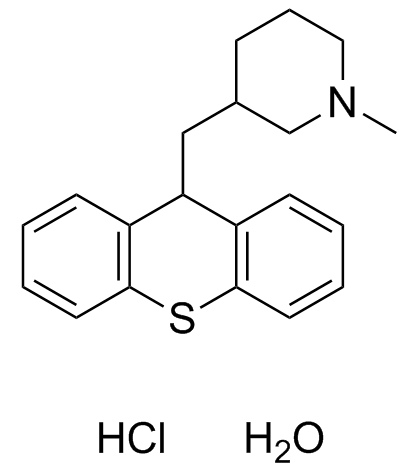Dualism in the effect of cholinolytics upon the human parotid gland deprived of parasympathetic control.
S L Levin
Index: Int. J. Clin. Pharmacol. Res. 6(5) , 429-39, (1986)
Full Text: HTML
Abstract
Dualism in the effects of atropine, and metixene upon the denervated human parotid salivary gland is demonstrated by the fact that they suppress pilocarpine secretion while themselves causing an extremely intense and prolonged salivation. A still stronger cholinolytic, chlorosyle, although causing salivation, blocks paradoxical salivation initiated by atropine and metacine. With respect to the latter ligands, chlorosyle acts as a partial agonist. Dualism in the cholinolytics' effect is conditioned by generation, following chronic enervation of the gland, of cholinoreceptor subpopulations of different functional significance and evolutional maturity. Depending on the length of the cholinoreceptor reactive zone, cholinolytics initiate blockade of some receptors and excitement of others.
Related Compounds
| Structure | Name/CAS No. | Molecular Formula | Articles |
|---|---|---|---|
 |
Metixene hydrochloride hydrate
CAS:7081-40-5 |
C20H26ClNOS |
|
[An anticholinergic agent, the side effect of mouth dryness ...
2010-07-01 [Ned. Tijdschr. Geneeskd. 127(51) , 2318-21, (1983)] |
|
Therapeutic efficacy of R-(-)-deprenyl as adjuvant therapy i...
1987-01-01 [J. Neural Transm. Suppl. 25 , 137-47, (1987)] |
|
Evaluation of an antispasmodic agent. Methixene hydrochlorid...
1966-03-07 [JAMA 195(10) , 851, (1966)] |
|
Colorimetric determination of thioxanthenes with tetracyanoe...
1986-08-22 [Pharm. Weekbl. Sci. 8(4) , 234-8, (1986)] |
|
[The treatment of Parkinson tremors and forms of extrapyrami...
1983-06-17 [Med. Welt 34(24) , 707-9, (1983)] |